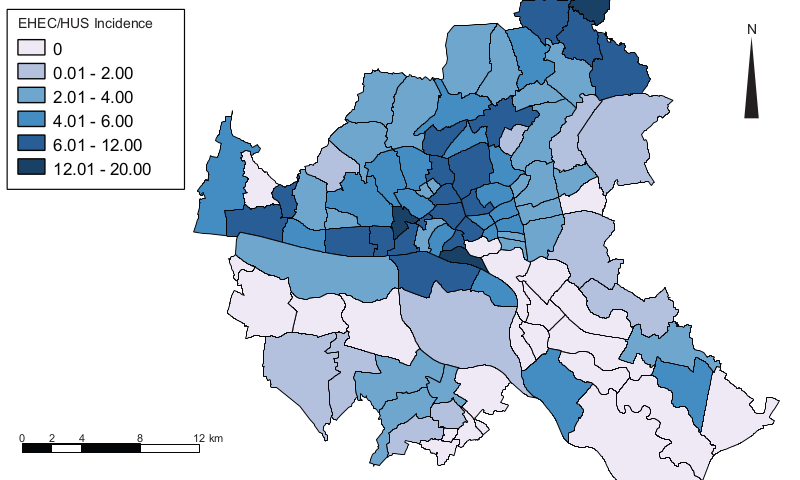Project Example: Ecological characterization of 2011 EHEC outbreak data

Research Objective
In 2011, a large outbreak of entero-hemorrhagic E. coli (EHEC) and hemolytic uremic syndrome (HUS) occurred in Germany. The City of Hamburg was the first focus of the epidemic and had the highest incidences among all sixteen German Federal States. This projects analyses the epidemiological characteristics of the Hamburg notification data. Furthermore, we conducted an ecological study in order to find a statistical model identifying associations between local socio-economic factors and EHEC/HUS incidences in the epidemic. The socio-economic variables selected in the final model suggest that the infection vehicle might rather be an unconventional food (as we consider fenugreek sprouts to be), than a conventional food, e.g. a common vegetable as tomatoes.
Statistical Methodology
- descriptive analysis of epidemiological characteristics
- Bayesian Poisson model fitted with R INLA
- spatial BYM effect composed by structured and unstructured effect
- missing value imputation
- stepwise variable selection using DIC criteria
Software
We used open-source software R and R-INLA for fast fitting of the Bayesian models.
Related Publications
- M. A. S. Tahden, J. Manitz, K. Baumgardt, G. Fell, T. Kneib, and G. Hegasy: Epidemiological and Ecological Characterization of the EHEC O104:H4 Outbreak in Hamburg, Germany, 2011 (submitted).
Remark
This work is a result of the co-supervision of the Master thesis by Maike Tahden.
